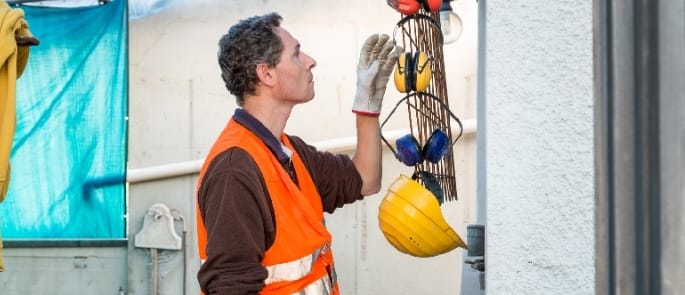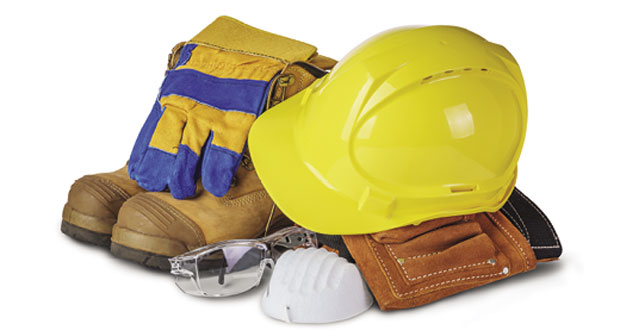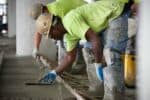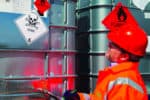In many jobs, wearing PPE (personal protective equipment) is a crucial aspect of remaining safe, and it is extremely important for both companies and individual workers.
Many employees recognise the importance of wearing PPE while on the job. However, for every willing employee, there is one who is adamant about not wearing safety gear for various reasons.
Some employees forget to put on PPE, while others refuse to put it on or, in the worst-case scenario, refuse to put on PPE or a certain type of personal protective equipment.
You can actually be fined for not wearing a PPE when it is required. The company will also be subjected to disciplinary action as a result of the breach. Employers who fail to provide personal protective equipment (PPE) and training to all employees may be fined with a separate penalty for each unprotected or untrained worker, according to OSHA.
Talking about it in detail, a per-employee penalty is imposed for each violation of the PPE or training requirements.

Penalty according to OSHA
The Occupational Safety and Health Administration issued a final rule on 12th January, 2009 that there will be a significant raise in the monetary penalty for certain PPE and risks training breaches.
Failure to give needed training to a large number of employees was often considered as a single offense in the past.
If the penalty for not providing particular personal protective equipment was $1500, the company might have been fined $1500 even if it failed to supply the essential PPE to 200 employees.
But the final rule clarifies OSHA’s standards by stating that grouping of violations is not permitted. Instead, each individual who is not provided with the appropriate PPE or training will be treated as a separate offense, with a separate penalty.
No organization wants to be subjected to monetary loss and disciplinary punishment for PPE violation, but it is important to realise that there are times when it is necessary.
Let us understand what are the dangers that PPE can protect us from.
1.) Being injured by falling items- your safety boots or hard hats can save you from injuries.
2.) Protection from polluted air- face masks are useful in these cases.
3.) Collisions and crashes- safety boots, hard hats, footguards are PPE required in case of crashes and impacts.
4.) Electrical hazards- certain safety boots come with features that protect you from electrical dangers.
5.) Burns caused by toxins- your body gear, face shields, gloves protect your exposed body parts from nasty burns.
6.) Cuts and injuries- protective boots, hats, proper body gear, safety glasses, etc all prevent cuts and injuries.
7.) Excessive noise or stress exposure- earplugs and earmuffs protect your ears from loud noises.
8.) Eye irritation caused by chemicals- proper safety glasses that come with chemical resistant features will protect your eyes from any harm.
Year after year, personal protective equipment saves hundreds of lives and allows employees and businesses to avoid thousands of small and severe accidents.
And preventing accidents and decreasing the risk of harm should be sufficient motivation for employees to wear PPE as much as possible.
What does PPE include?
Well, there are various types of PPE depending on the different work industries. But it all serves the same thing- protection against anything that is hazardous to your body. The most basic required PPEs are:

1.) Safety boots and safety pants
Safety boots and safety pants protect employees against a variety of risks in the workplace, such as falling, rolling, or sharp items, wet, slippery, or hot surfaces and also electrical hazards. (Are Employers Required To Pay For Steel Toe Boots?)
This PPE comprises the following items:
Protective pants: Protective pants are often made of leather or aluminized rayon and include safety snaps for simple removal. They protect the wearer’s legs and feet.
Toe guards: These protect the wearer’s toes from impact and are typically made of steel, alloy or composite.
Safety boots: A range of special-purpose footwear to protect your feet from any impact and also prevent slips and falls on slippery, uncertain surfaces.
2.) Protective head gears
Industrial workers are protected by hard hats from head injuries caused by falling, flying, or fixed objects. Penetration, shock, and water resistance, as well as slow-burning, are all requirements for protective hats.
There are three types of hard hats used in industry:
Impact and penetration resistance, as well as some protection from electrical hazards, are all provided by Class A.
Class B hard helmets offer the most comprehensive protection against electrical risks, as well as impact and penetration resistance.
Class C category hats offer some impact resistance but no resistance to electrical hazards.
Employers must also guarantee that their employees cover and protect their long hair to avoid it becoming trapped in machinery, according to OSHA standards.
When a hard helmet is damaged or impacts, it must be replaced, even if the damage is not evident to the naked eye.
3.) Safety glasses
In some workplaces protective eyewear is necessary to protect employees’ eyes from flying particles, hot liquids, molten metal, chemical fumes, and hazardous radiation.
The PPE must fit the wearer’s face snugly and comfortably, be washable, and not obstruct vision or movement.
Safety goggles or glasses, welding shields, and laser safety goggles are all examples of protective eyewear.
4.) Protective Gloves
Employees will be protected from cuts, chemical and thermal burns, and punctures using gloves, finger guards, and arm covers.
Hand protection can provide varying levels of thermal protection and adapt to different grip needs depending on the task and the danger of exposure.
Protective gloves can be fashioned out of leather, canvas, or metal mesh, as well as fabric, chemical- and liquid-resistant materials, and insulating rubber.
5.) Protective face masks and face shields
Face masks are a loose-fitting, disposable device that covers the user’s lips and nose to establish a physical barrier between them and others around them.
The purpose of masks and face shields is to protect the employees from particles or droplets that may contain germs or other toxic vapors, as well as to minimise the amount of saliva and respiratory secretions that the user spreads to others.
Face shield protection is generally worn on top of masks or goggles to avoid inhalation of hazardous chemicals or virus-carrying aerosol droplets, as in the case of COVID-19.
6.) Earplugs
Earplugs and earmuffs are worn by employees to protect them from excessive noise, which can cause permanent hearing loss and stress.
Workers should be equipped for specially moulded earplugs in a workplace where they are consistently exposed to excessive levels of noise.
The shorter time an individual should be expected to perform without proper hearing protection, the louder and more consistent the noise.
7.) Body cover
Workers may be forced to wear full body protection in extremely dangerous situations. Jackets, aprons, lab coats, overalls, and complete bodysuits are all options for body protection.
They’re composed of a variety of materials, including fire-resistant wool or cotton, rubber, leather, or plastic.
This type of body protection must be meticulously measured for each employee to ensure a suitable fit.
As an employee, you have certain rights and responsibilities you should know about.
Rights
1.) To have any dangers to your health and safety adequately handled.
2.) Inform your workplace of any health and safety issues.
3.) To be supplied with any personal protection and safety equipment at no cost.
4.) If you have legitimate concerns about your safety, you have the right to stop working and leave your work without being penalised.
5.) You must be provided rest intervals during the working day.
Responsibilities
1.) Must look after your own health and safety in a sensible manner
2.) Must take reasonable precautions to ensure that your actions in the course of your employment do not endanger others, including coworkers and the general public.
3.) To work cooperatively with your employer, ensuring that you receive appropriate training and that you understand and follow the company’s health and safety policies.
4.) Not to interfere with or misuse anything provided for your health, safety, or welfare
5.) To notify your employer if something occurs that may affect your ability to work.
Now let us talk in case you’re an employer, and you want all your employees to work in a safe manner. How to get all your employees to wear PPE?
1.) Make it clear in the employment contract
If you attempt everything to accommodate an employee but they refuse or are unable to wear PPE, you may have grounds for dismissal. Make this clear in your employment contracts to eliminate any doubt or accusations of ignorance.
Add a condition stating that wearing PPE is required to comply with health and safety regulations. But do not think that adding a clause will exempt you from liability if someone gets hurt during work. It just provides you with the foundation you’ll need to deal with situations of persistent rejection.
2.) Practice what you preach
Wear PPE in all necessary zones to set an example. Workers don’t understand why they should obey regulations if senior management doesn’t.
You lose your employees’ respect and trust by contradicting your stance on health and safety by implying that PPE is unimportant.
Plus, even if you don’t work there all the time, you’re not immune to the dangers, therefore, if you are in an environment that requires PPE, worker or not, you have to be protected.
3.) Let your employees select what is comfortable for them
People prefer equipment that they have chosen for themselves because it offers them a sense of agency and control.
As a result, it’s understandable that employees are less likely to wear PPE that you choose for them without their involvement.
Allow those workers who refuse or require encouragement to wear their PPE to accompany you and pick equipment themselves.
This allows users to select personal protective equipment (PPE) that fits them appropriately and accommodates any medical problems.
4.) Provide proper training
People rarely use their safety equipment due to a lack of understanding and risk perception. Health and safety training, especially PPE training, may reinforce the need for wearing protective equipment.
Personal testimonies from people who have been injured or ill as a result of not wearing PPE are also relevant.
Conclusion
It is important to be extremely safe if you work in an environment that has potential danger to cause injuries. Proper research on your work place and the type of PPE required for it is very important.
If you’re an employee, then make sure you are wearing the PPE and it fits you just fine. But if you’re an employer, then you have to make sure all your employees are following the proper PPE rule without violating any guidelines, as these violations can hamper the force of work and also include unnecessary fines for the organization.







